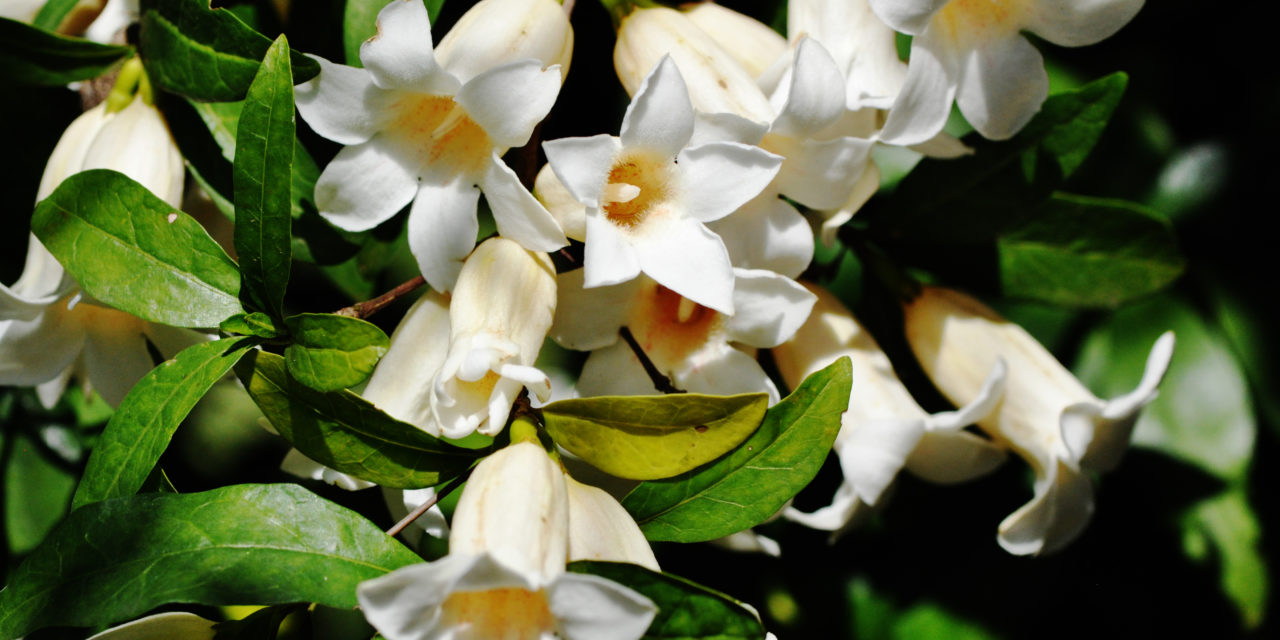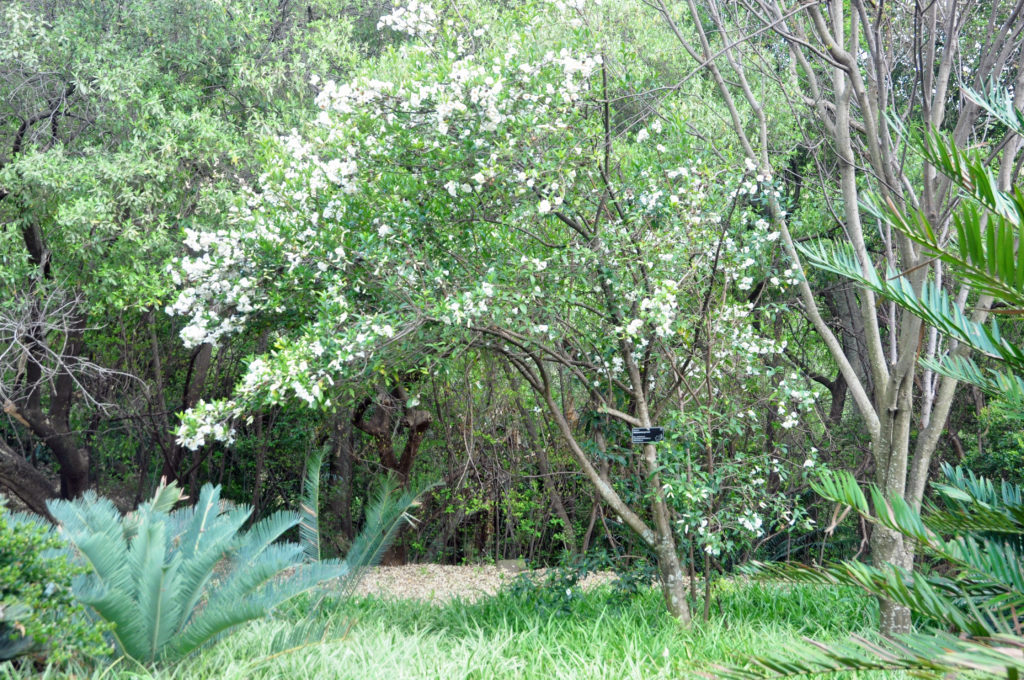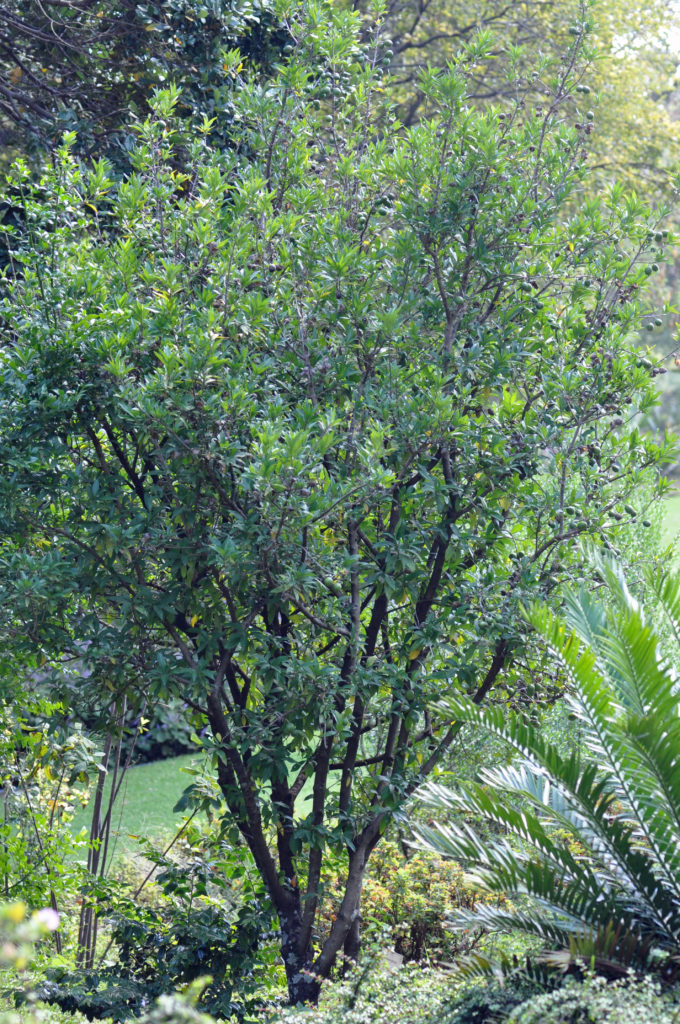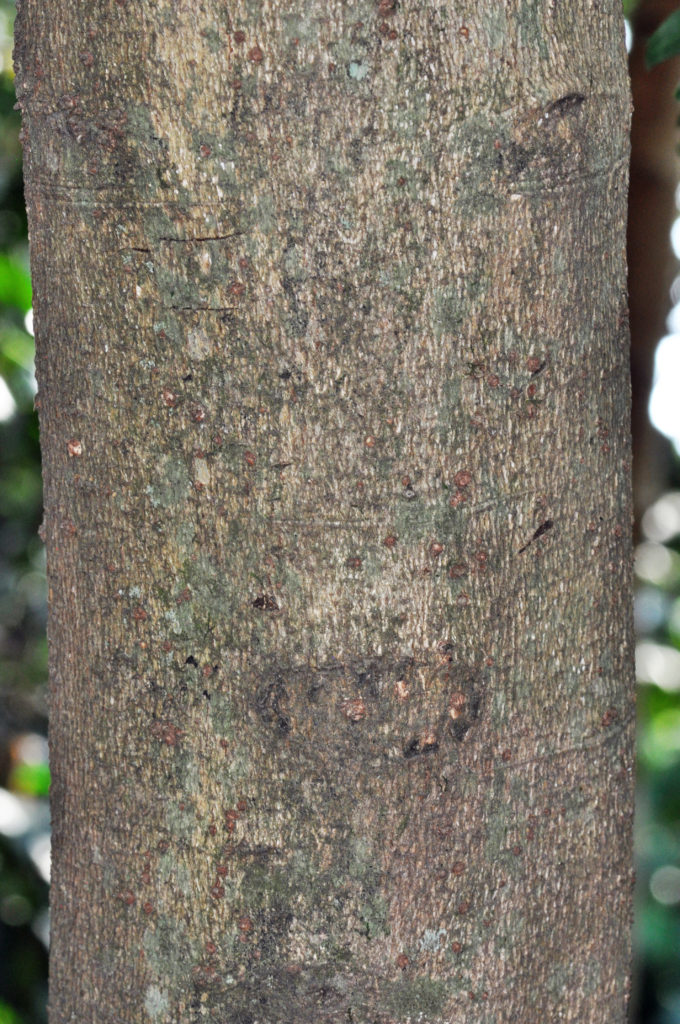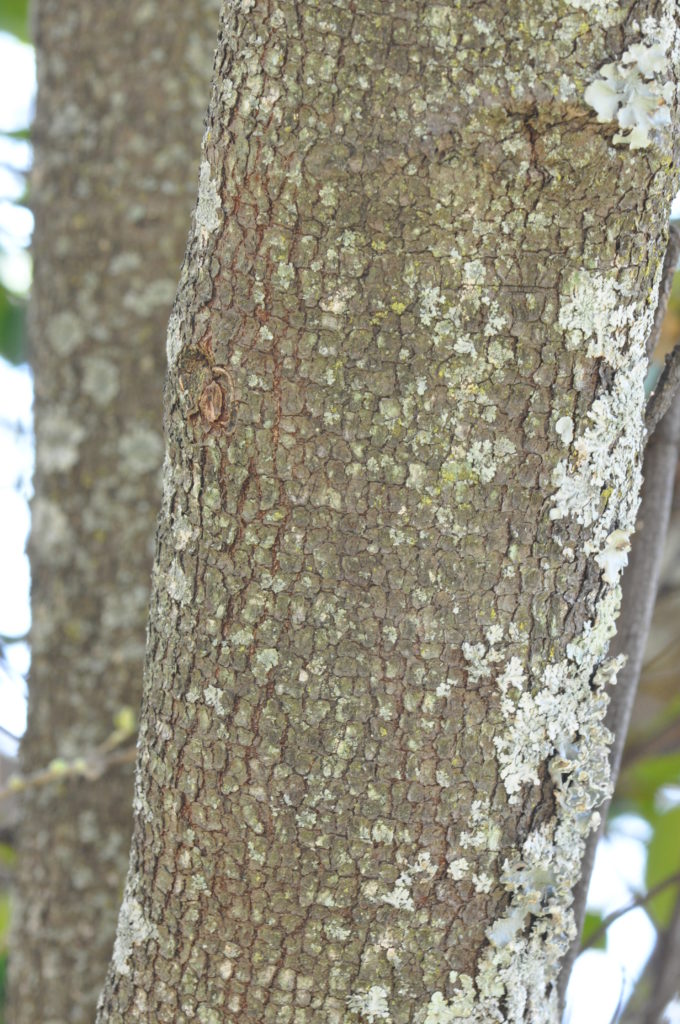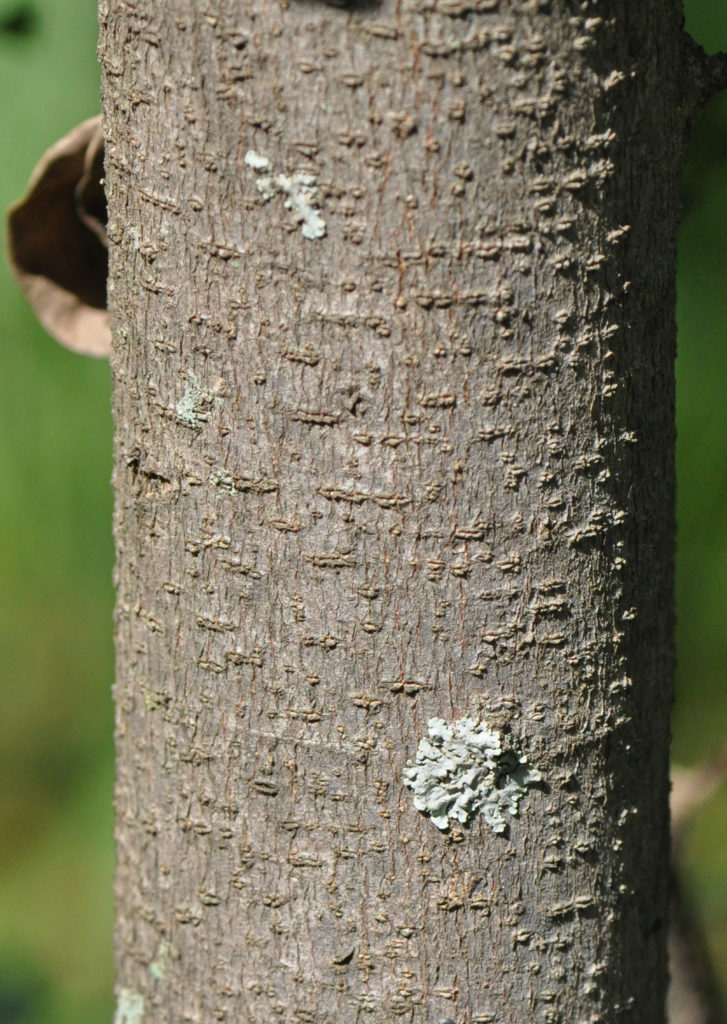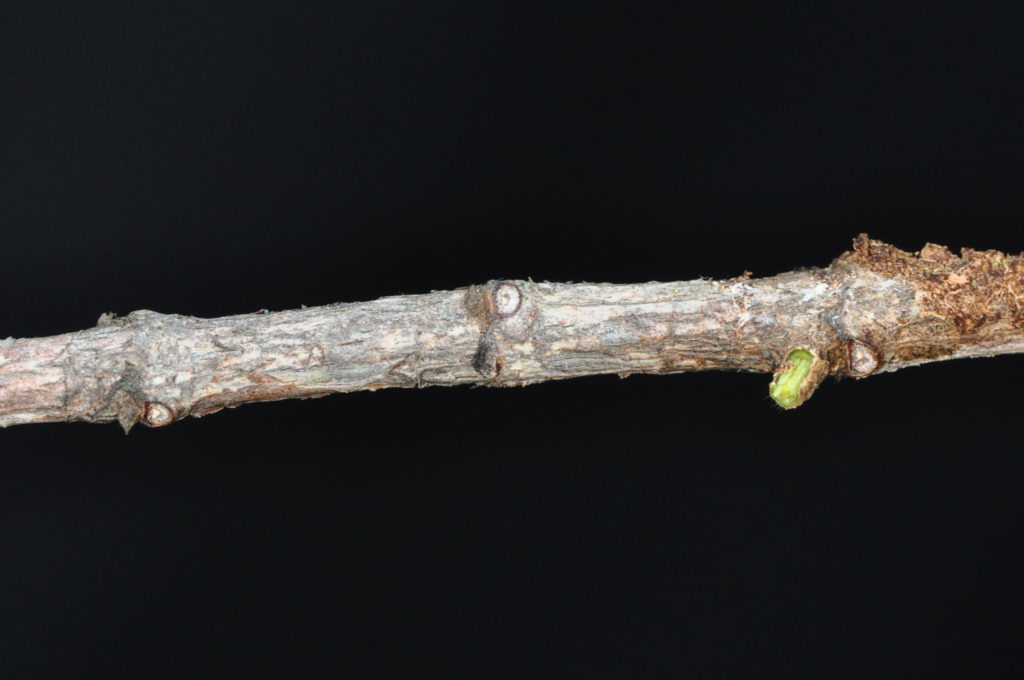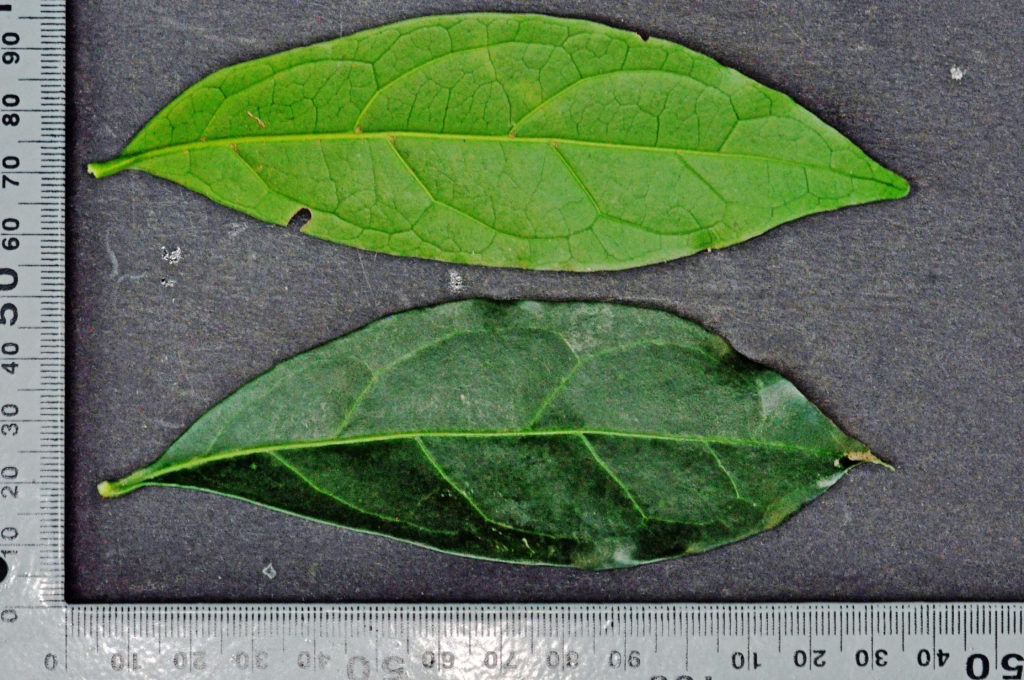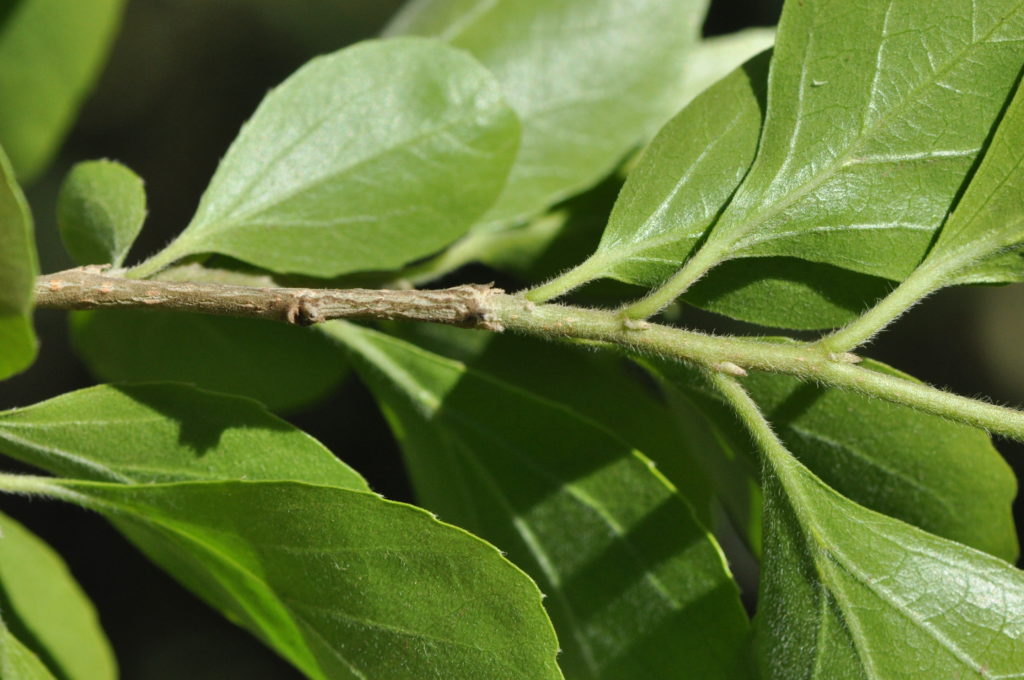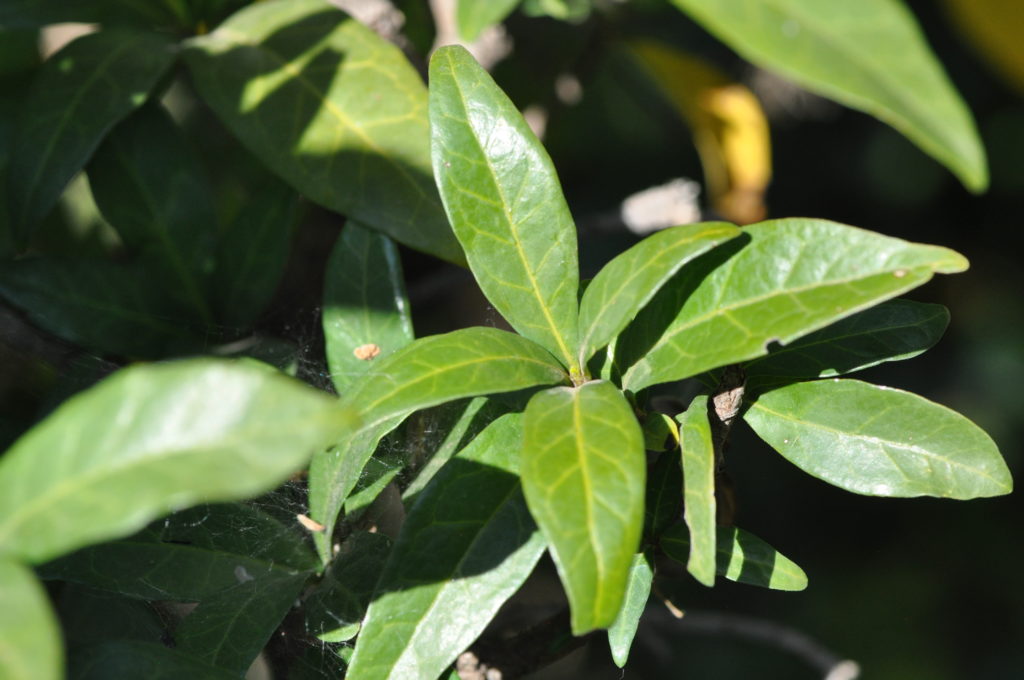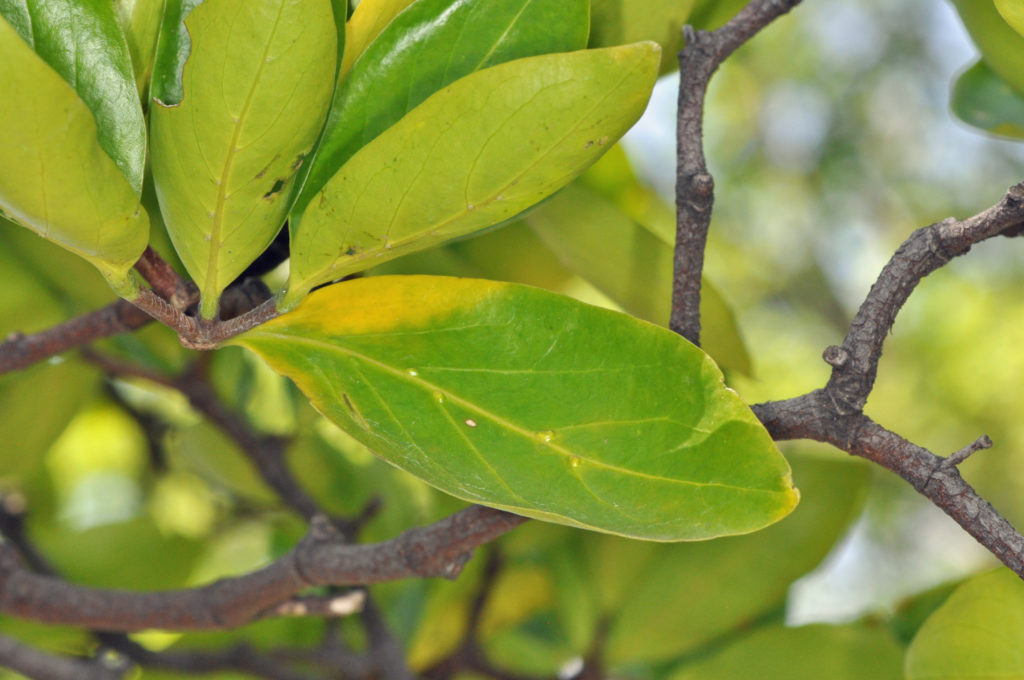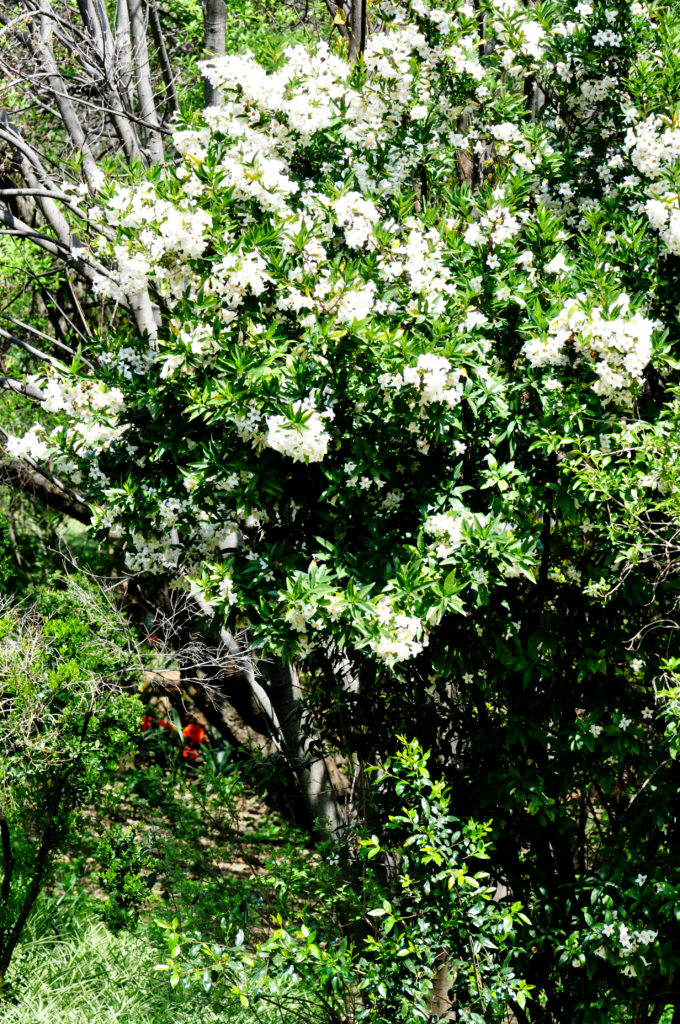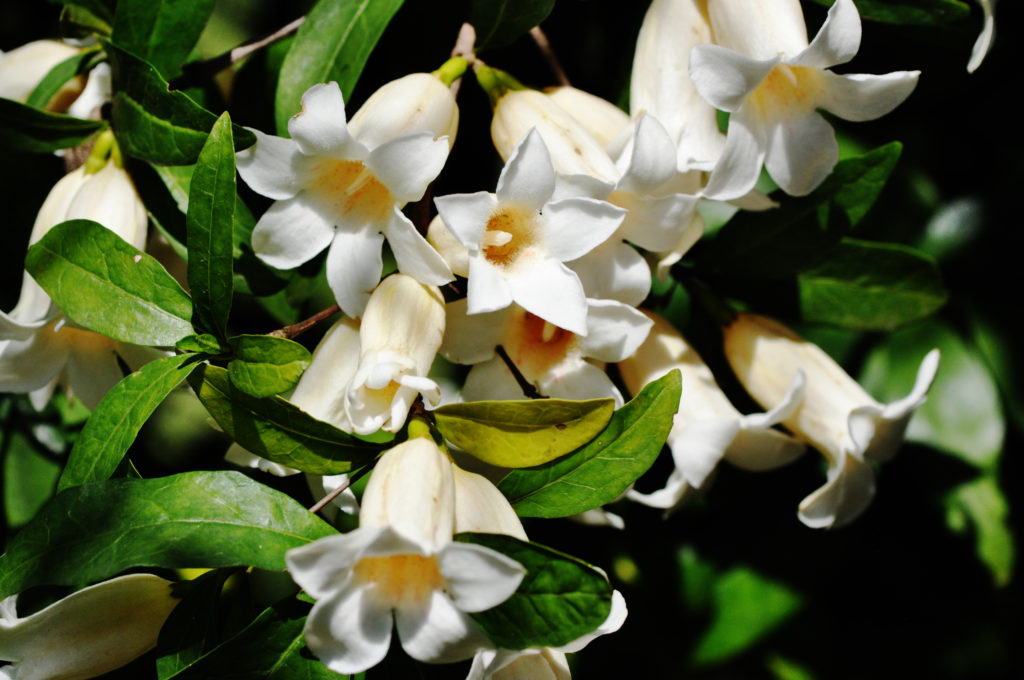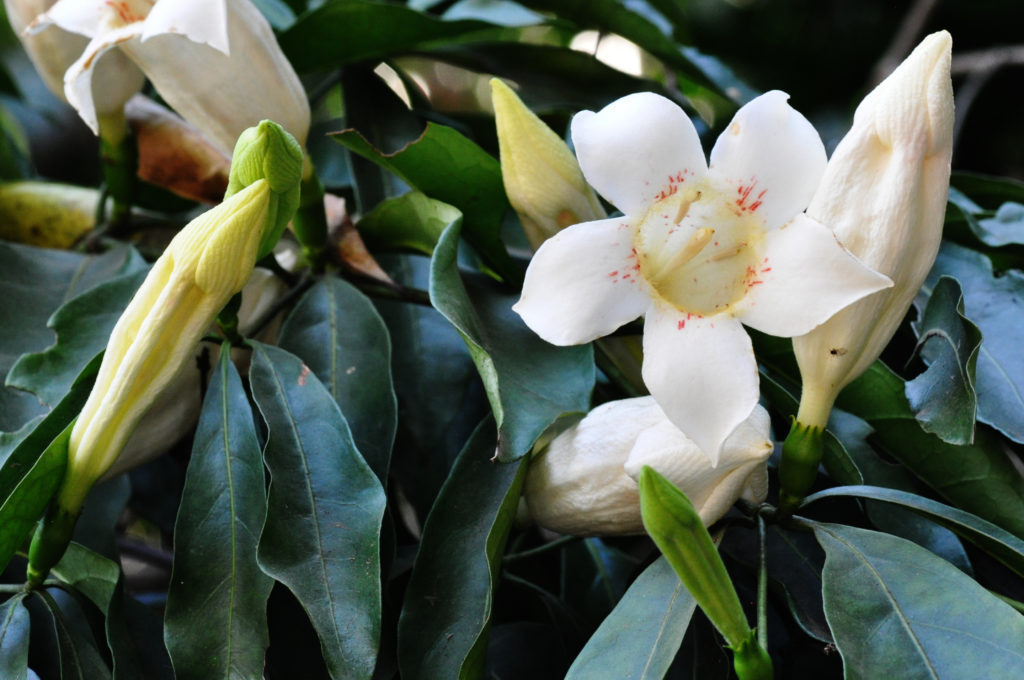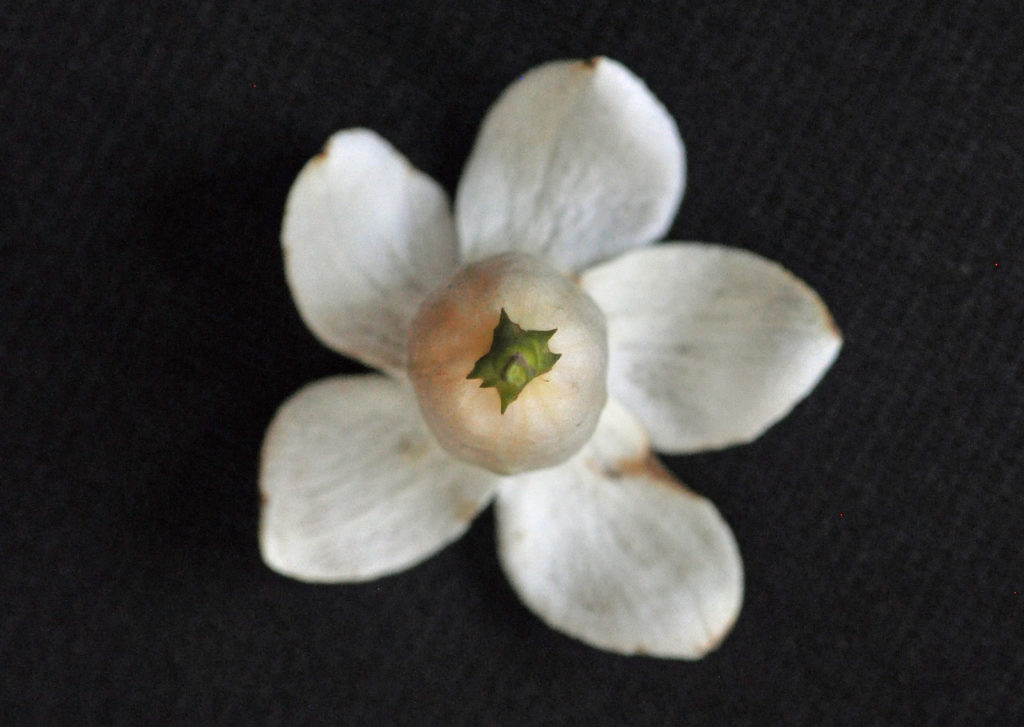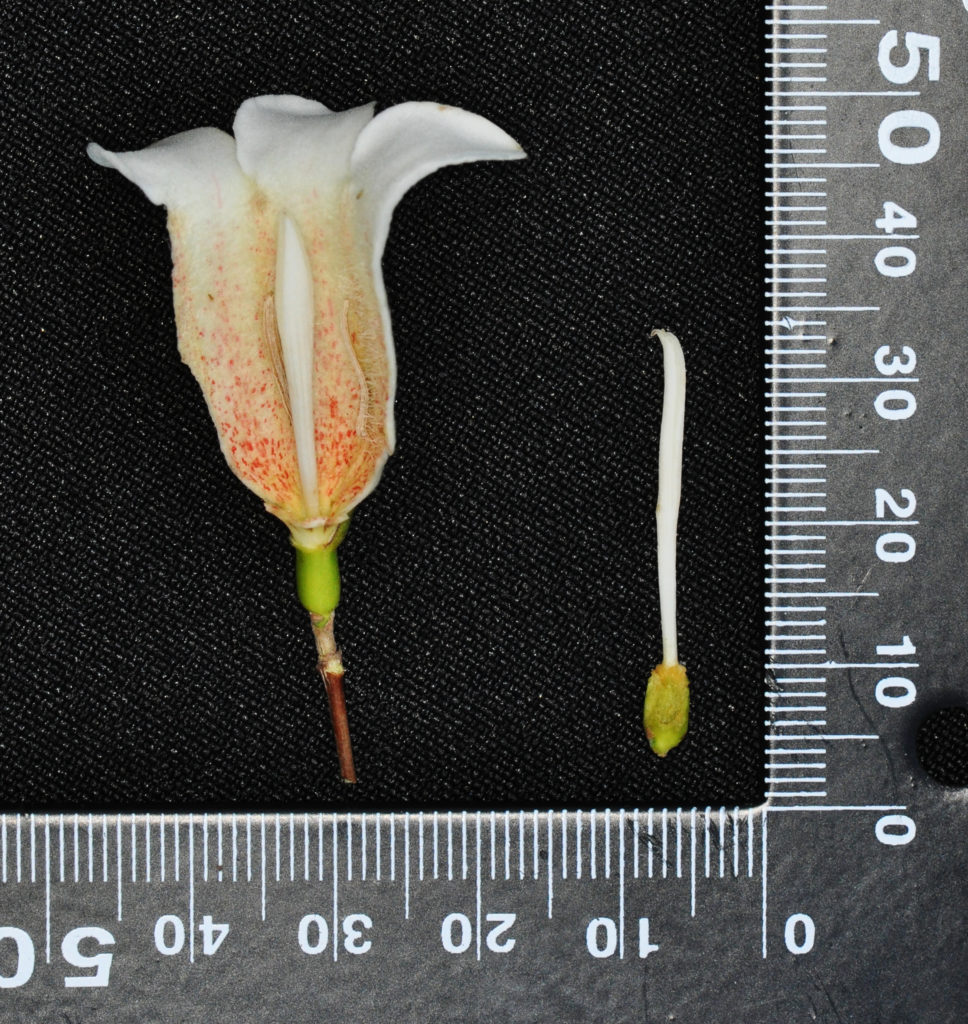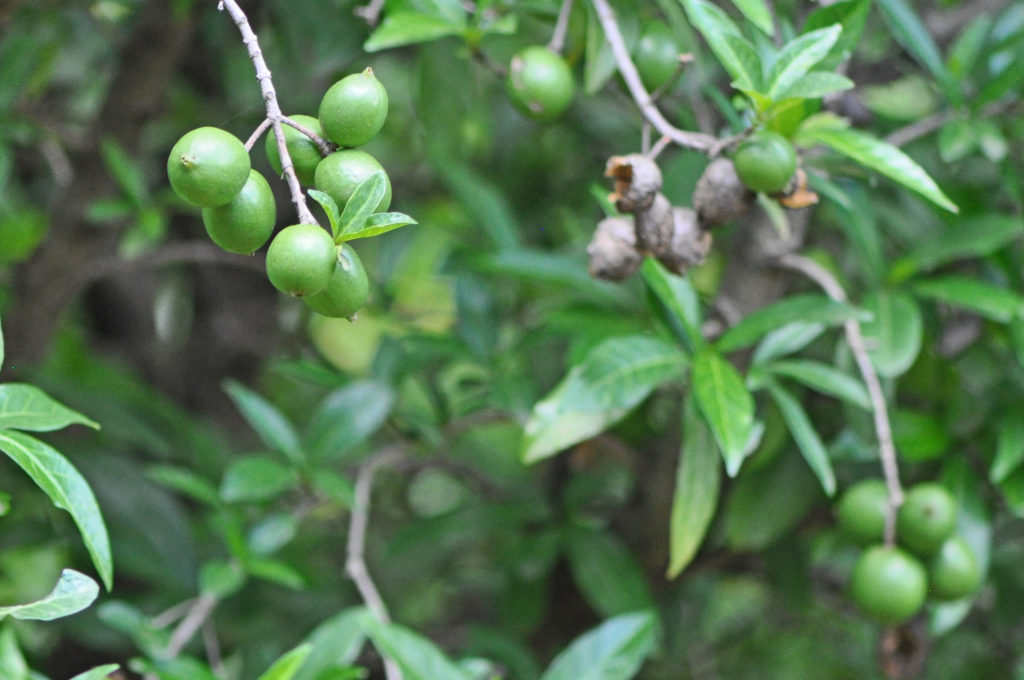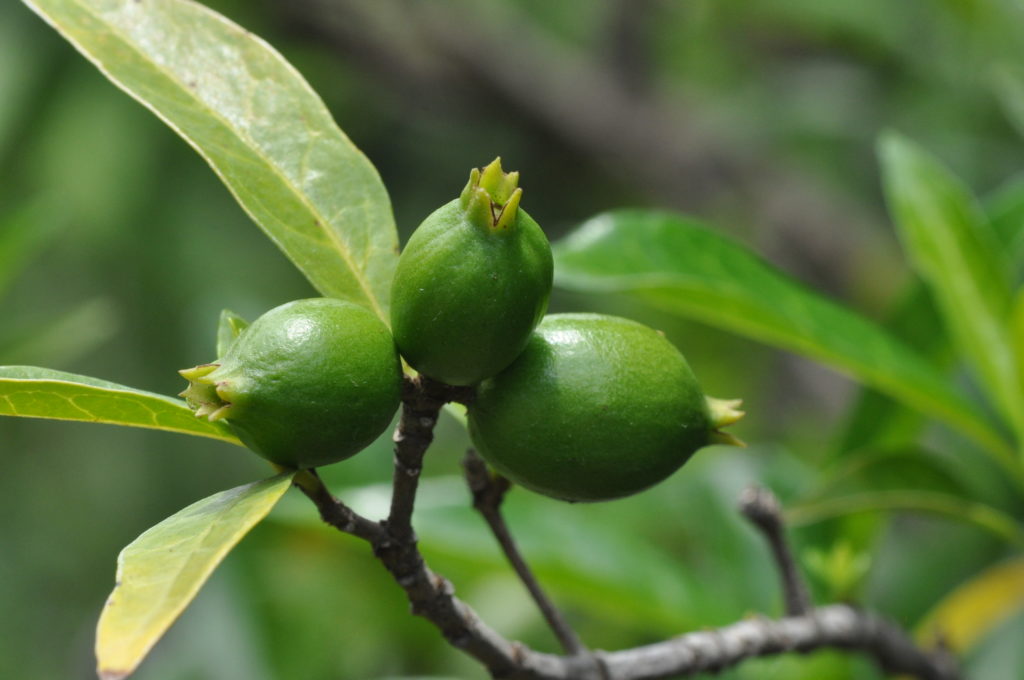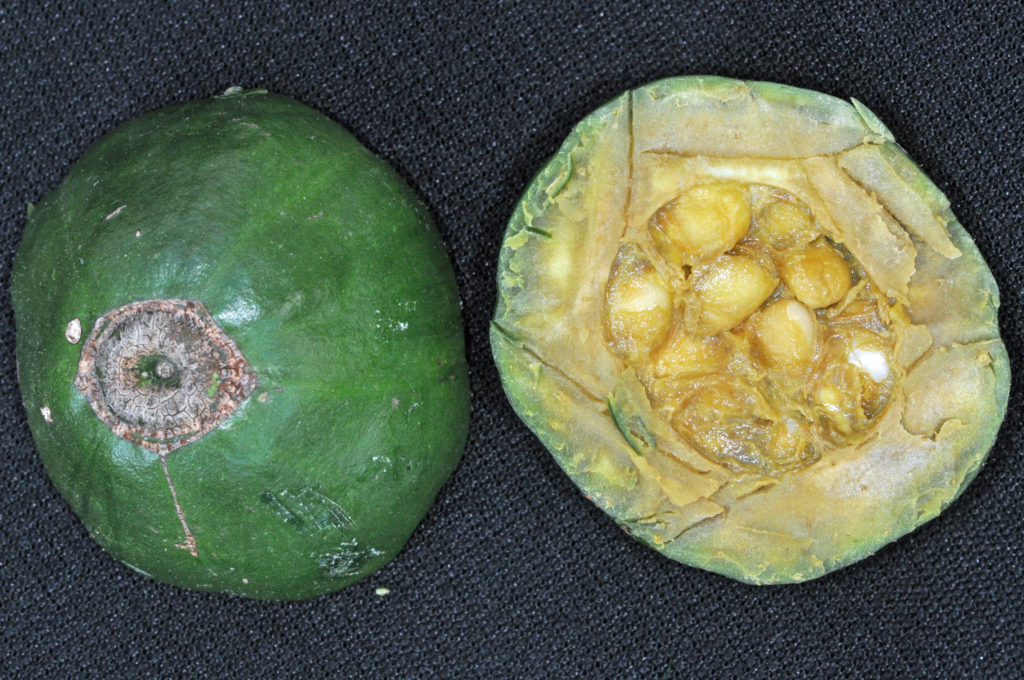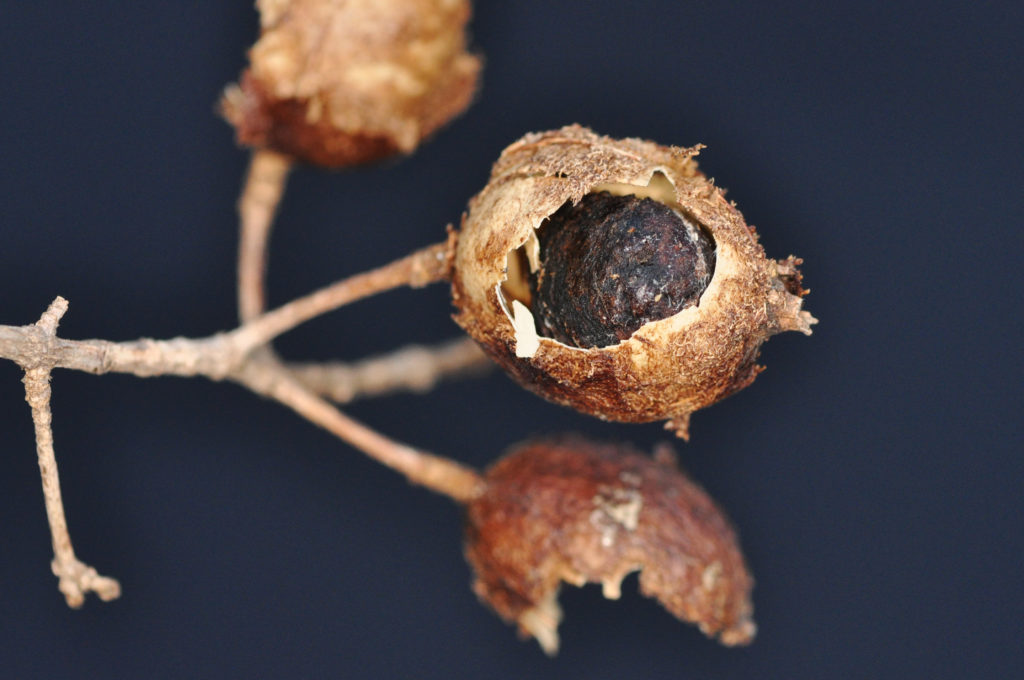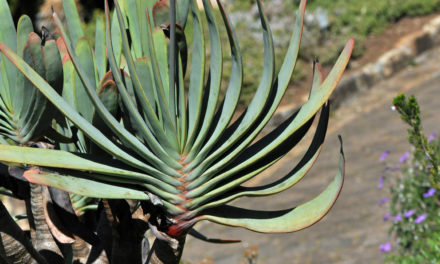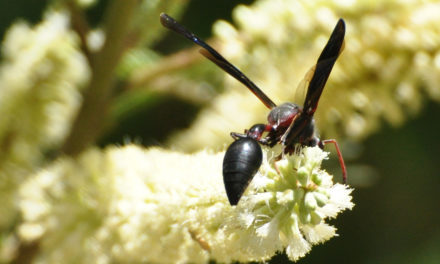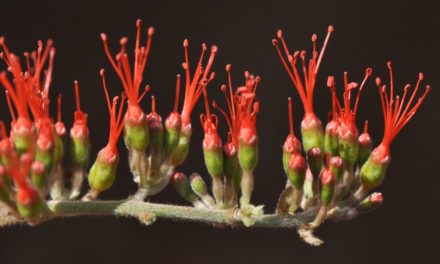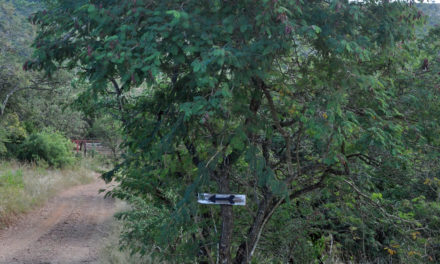General Info
The Tree is usually up to 7m high and bark becomes marked with rectangular segments when older. The simple, opposite Leaves are translucent when viewed against a strong light and domatia are present. The strongly scented creamy-white and bell-shaped Flowers have a style which extends beyond the mouth. The Fruit is spherical and contains many Seeds.
Description
Tree
Rothmannia globosa, Gardenia globose.
RSA Tree No. 695.
Common names: September Bells, Bell Gardenia, klokkies-valskatjiepiering.
Family: Rubiaceae. The family has in excess of 600 genera and 13 000 species and members include trees, shrubs and herbs. Genera include Gardenia, (Afro)Canthium. Pavetta, Rothmannia and coffee. Leaves are simple and are opposite or whorled. Flowers bisexual or unisexual. Gamosepalous (a calyx whose sepals at least partly united), Gamopetalous (united joined petals – at least at the base). Stamens usually as many as and alternating with corolla lobes. The ovary is inferior. Fruit is a drupe, berry or capsule.
Name derivation: Rothmannia – named after Dr Georgius Rothman (1739-1778) – pupil of Linnaeus. globose – spherical (fruit). The genus Rothmannia has 3 species in Southern Africa.
Conservation Status: L C. (least concern). 2009 (Raimondo et al.).
Tree is small, without spines and usually 4-7m but may reach 12m high. The Crown has shiny leaves. Main stem is short and branches occur low down. The Bark is brown or dark grey and smoothish when young. It becomes marked with rectangular segments when older. Twigs (1-year-old current branch segments) are knobbly.
- 421 2016.09.20 Walter Sisulu NBG. Photo: David Becking.
- 614 2015.04.14 Walter Sisulu NBG. Photo: David Becking.
- 969 2014.09.15 Lowveld NBG. Photo: David Becking.
- 813 2016.08.30 Walter Sisulu NBG. Photo: David Becking.
- 512 2016.02.16 Walter Sisulu NBG. Photo: David Becking.
- 713 2017.09.06 Walter Sisulu NBG. Photo: David Becking.
Leaves
Leaves are simple (has a single blade which may have incisions that are not deep enough to divide the blade into leaflets), opposite and elliptic to lanceolate. Each is up to 14 x 5cm, dark or mid green, glossy above and paler below. The tree is evergreen or briefly deciduous. Apart from domatia (hair-tuft domatia – a tiny chamber produced by plants that house arthropods. To the naked eye the domatia appear as small bumps), leaves are hairless when mature. Domatia occur in the axils of the main veins. Midrib and lateral veins are pale green, often yellow (both sides) or red and raised below. The leaves are translucent when held against a strong light. Here the network of veins is sometimes clearly visible. Margins are entire (with a continuous margin, not in any way indented but may be hairy) and wavy. The Apex is sharply or bluntly pointed or round. The Base is narrowed to tapering. The Petiole (leaf stalk) is up to 1cm long and may be reddish. Stipules (basal appendage of the petiole) are hairy on the inside.
- 970M1 2014.09.15 Lowveld NBG. Photo: David Becking.
- 429 2017.10.10 Walter Sisulu NBG. Photo: David Becking.
- 740 2016.08.30 Walter Sisulu NBG. Photo: David Becking.
- 613 2015.04.14 Walter Sisulu NBG. Photo: David Becking.
- 328 2015.09.15 Walter Sisulu NBG. Photo: David Becking.
Flowers
Flowers have a strong sweet smell and usually appear before the new leaves. They are creamy white and borne on short side branches. They are mainly produced in September – hence common name. Flowering time is brief. Flowers are narrowly bell-shaped (not cylindrical shaped as in Gardenia). They often have pink/maroon flecks in the yellowish throat and on the base of the lobes. Flowers are solitary or in 2 to 4-flowered fascicles (bundles or clusters) and often produced in large numbers. Each flower is about 2,5cm long and 3,8cm in diameter. The Calyx is green and its short tube ends with 6 irregularly positioned and pointed Lobes. The Corolla tube is cylindrical close to the base and bell-shaped thereafter. It ends with up to 5 Petals. It is often marked with pink speckles. The lobes are recurved (bent backwards). There are 5 Stamens which alternate with the corolla lobes and are attached to the corolla tube. The sessile Anthers just appear above the hairy corolla mouth. They have 2 thecae (pollen sacs) and dehisce through longitudinal slits. There is a single Pistil (a unit of the Gynoecium, the female element of the flower, composed of the Ovary, Style and Stigma) and the inferior Ovary is 2-chambered and not 1 as in Gardenia. It has many ovules. The hairless, exserted (sticking out) Style extends beyond the petal mouth. Flowers are pollinated by carpenter bees (which build their nests in dead wood). (Aug-Nov).
- 296 2015.09.15 Walter Sisulu NBG. Photo: David Becking.
- 298 2015.09.15 Walter Sisulu NBG. Photo: David Becking.
- 966M 2014.09.15 Lowveld NBG. Photo: David Becking.
- 413 2016.09.20 Walter Sisulu NBG. Photo: David Becking.
- 722 2014.09.15 Lowveld NBG. Photo: David Becking.
Fruit
Fruit is spherical, about 2,5cm in diameter, green and ends with a persistent calyx. The fruit finally becomes dry, hard and woody. The edible fruit has many flat Seeds. These seeds are embedded in a pulpy placental tissue. (Jan-Nov).
- 695 2012.12.23 Walter Sisulu NBG. Photo: David Becking.
- 594 2015.10.20 Walter Sisulu NBG. Photo: David Becking.
- 1003 2017.03.17 Walter Sisulu NBG. Photo: David Becking.
- 717 2017.09.06 Walter Sisulu NBG. Photo: David Becking.
Distribution & Ecology
This plant tolerates some frost. Trees are common in coastal dune bush, evergreen forests and forest margins up to 1 500m. Location: KwaZulu-Natal, Eastern Cape, Limpopo, Mpumalanga, and Swaziland. Monkeys and baboons eat the fruit.
Ethnobotany
The Wood is pale grey, dense and hard. The plant grows best in slightly acidic soil and tolerates some frost. The fruits may be edible and the dried fruits are used to make necklaces.
References
Coates Palgrave, M. 2002. Keith Coates Palgrave Trees of Southern Africa, edn 3. Struik, Cape Town.
Lawrence, G. H. M, 1951. Taxonomy of Vascular Plants, The Macmillan Company, New York. Tenth Printing 1965.
Palmer, E. & Pitman, N. 1972. Trees of southern Africa, Balkema, Amsterdam, Cape Town.
Schmidt, S. Lotter, M. & McCleland, W. 2002. Trees and Shrubs of Mpumalanga and the Kruger National Park.
van Wyk, B. & van Wyk, P. 1997 Field guide to Trees of Southern Africa, Struik, Cape Town.
http://redlist.sanbi.org/species.php?species=1469-5
https://en.wikipedia.org/wiki/Rothmannia_globosa
http://plantzafrica.com/plantqrs/rothmanglob.htm
http://www.gardensonline.com.au/GardenShed/PlantFinder/Show_1919.aspx
http://toptropicals.com/catalog/uid/rothmannia_globosa.htm
http://posa.sanbi.org/flora/browse.php?src=SP

